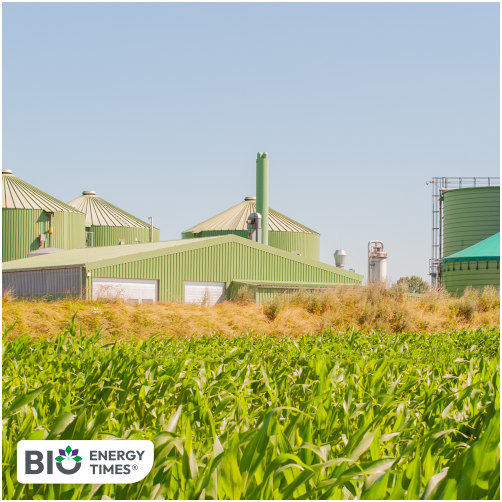In a major step toward sustainable waste management and clean energy, Bhutan unveiled its first utility-scale biogas project in Thimphu on World Environment Day. The project is a collaboration between the SAARC Development Fund (SDF) and the Bhutan Ecological Society (BES), in partnership with the Department of Environment and Climate Change and Thimphu Thromde, reports Kuensel.
The two-year pilot project, titled “Production of Commercial Biogas from Household Waste”, will be established at Memelakha and is expected to be completed by 2027. It aims to transform Thimphu’s growing organic waste into biogas and organic fertiliser, helping reduce reliance on imported liquefied petroleum gas (LPG) and chemical fertilisers.
The project is funded with Nu 81.1 million, including a grant of USD 448,616 from the SDF. Additional co-financing is provided by the Bhutan Trust Fund for Environmental Conservation and Value Network Ventures (VNV), which brings expertise in climate finance and carbon credit development under the Paris Agreement.
Once operational, the facility will process 20 tonnes of organic waste daily. It is expected to generate about 250 tonnes of biogas annually—equivalent to replacing 17,490 LPG cylinders—and produce 990 metric tonnes of organic fertiliser. Thimphu Thromde will be responsible for collecting waste from homes, restaurants, and vegetable markets, while BES will oversee the distribution of biogas and fertiliser through a dealer network serving both households and businesses.
The initiative will divert over 6,600 tonnes of waste from landfills each year and is expected to cut greenhouse gas emissions by approximately 3,595 tonnes of carbon dioxide. Biogas from this plant will cost around three percent less than subsidised LPG and 25 percent less than its unsubsidised counterpart, making it a more affordable and environmentally friendly energy option.
At the launch, SDF Officer-in-Charge Irosha Cooray highlighted the project’s potential as a model for other South Asian countries. “By transforming waste into energy, this project is a powerful example of how regional cooperation and local action can drive sustainable development across our region,” she said.
Dr Norbu Wandgi, Officiating Executive Director of BES, described the project as a critical step in Bhutan’s shift toward renewable energy. He noted that organic waste, especially food waste, is a serious issue in Bhutan’s urban areas. A recent study found that over half of Thimphu’s 400 kilograms of daily waste is food-related, which emits methane—a potent greenhouse gas—when left to rot in landfills.
To complement the biogas plant, Thimphu Thromde is also setting up a Nu 2 million composting facility at the Memelakha landfill. Funded by the United Nations Environment Programme through the Institute for Global Environmental Strategies, this plant is scheduled to be operational by the end of 2025.
Both initiatives support Bhutan’s National Fertiliser Strategy and Action Plan (2023–2030), which seeks to increase domestic organic fertiliser production from 3,200 metric tonnes in 2023 to 15,260 metric tonnes by 2030. Bhutan currently imports around 3,500 metric tonnes of chemical fertiliser annually, although its usage per hectare remains low compared to neighbouring countries.
By transitioning to locally produced organic alternatives, Bhutan aims to improve food security and reduce its dependence on imported chemicals. The country’s Low Emission Development Strategy for Food Security includes a target to cut synthetic fertiliser use by 5 percent each year.
Cooray concluded by saying, “What we are launching today in Bhutan is not just a project. It is a regional inspiration. We are keen to see such models replicated across SAARC Member States, where urban centres face similar challenges in waste management, energy security, and climate resilience.”














